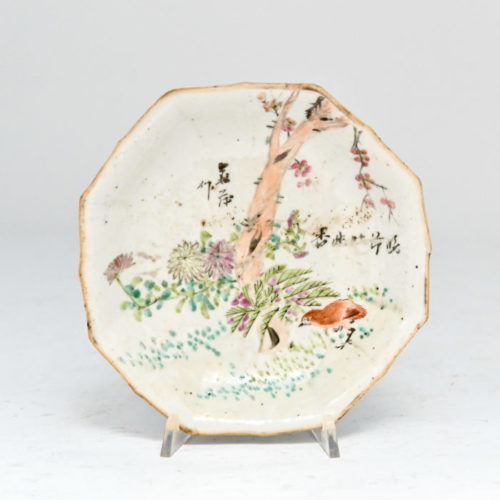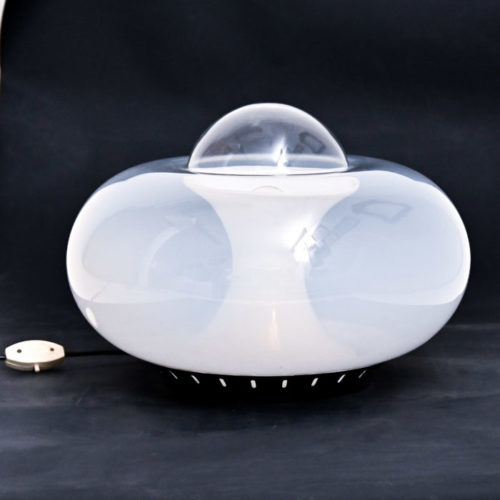-
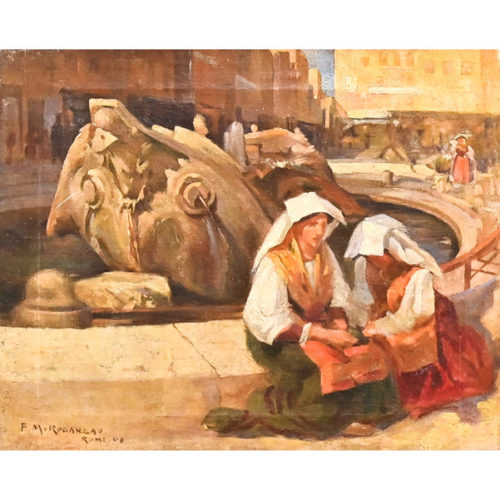 "Women in Piazza di Spagna, at the Fontana della Barcaccia, Rome" oil on canvas by the French painter François Maurice Roganeau. Work signed and dated F. M. Roganeau Rome 1908. Francis Maurice Roganeau (Bordeaux 1883 - Aix-en-Provence 1973) is a French painter, illustrator and sculptor. François-Maurice Roganeau was student of the renowned sculptors Gaston Veuvenot Leroux and Paul Quinsac at the School of Fine Arts in Bordeaux, then he went to study in Jean-Léon Gérôme's studio and later on with Gabriel Ferrier at the Beaux-Arts in Paris. He started with illustration and painting. As an illustrator, he mainly worked for the publisher Henri Laurens. In 1906 he won the first Grand Prix of Rome in painting and the second Grand Prix of sculpture. He exhibited at the 1912 Salon and received a medal for his he painting Le Soir, à la Rivière, inspired by one of André Chénier's Poésies antiques. In 1917 he was commissioned to repair the identical ceiling of the Grand Théâtre de Bordeaux, initially painted by Jean-Baptiste-Claude Robin. He also supplied colored glass boxes to the master glassmaker Gustave Pierre Dagrant, such as the one in the stained glass window of the church of Castillon-la-Bataille. He was director of the Bordeaux School of Fine Arts from 1929 to 1958. In 1932 he was made a Knight of the Legion of Honor. His latest works depict the Basque Country, its people and its landscapes. Period: 1908 Measurements: In frame h 54.5 x L 61.5 x D 6 / Canvas 28.5 x L 35.5 cm
"Women in Piazza di Spagna, at the Fontana della Barcaccia, Rome" oil on canvas by the French painter François Maurice Roganeau. Work signed and dated F. M. Roganeau Rome 1908. Francis Maurice Roganeau (Bordeaux 1883 - Aix-en-Provence 1973) is a French painter, illustrator and sculptor. François-Maurice Roganeau was student of the renowned sculptors Gaston Veuvenot Leroux and Paul Quinsac at the School of Fine Arts in Bordeaux, then he went to study in Jean-Léon Gérôme's studio and later on with Gabriel Ferrier at the Beaux-Arts in Paris. He started with illustration and painting. As an illustrator, he mainly worked for the publisher Henri Laurens. In 1906 he won the first Grand Prix of Rome in painting and the second Grand Prix of sculpture. He exhibited at the 1912 Salon and received a medal for his he painting Le Soir, à la Rivière, inspired by one of André Chénier's Poésies antiques. In 1917 he was commissioned to repair the identical ceiling of the Grand Théâtre de Bordeaux, initially painted by Jean-Baptiste-Claude Robin. He also supplied colored glass boxes to the master glassmaker Gustave Pierre Dagrant, such as the one in the stained glass window of the church of Castillon-la-Bataille. He was director of the Bordeaux School of Fine Arts from 1929 to 1958. In 1932 he was made a Knight of the Legion of Honor. His latest works depict the Basque Country, its people and its landscapes. Period: 1908 Measurements: In frame h 54.5 x L 61.5 x D 6 / Canvas 28.5 x L 35.5 cm -
Out of stock
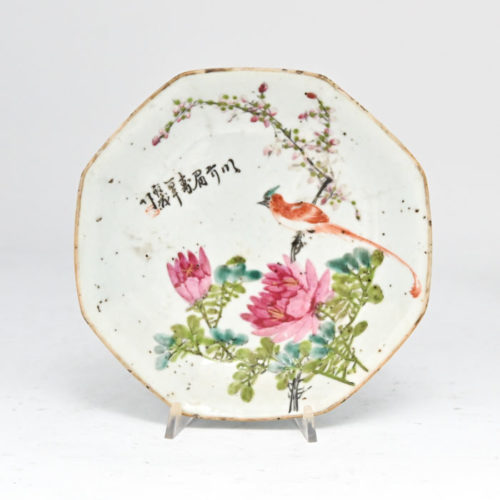 One of six antique ceramic saucers / backsplashes, China, from the early 1900s. Period: Early 1900s Measurements: H 19.5 x W 20 x D 4.5 cm
One of six antique ceramic saucers / backsplashes, China, from the early 1900s. Period: Early 1900s Measurements: H 19.5 x W 20 x D 4.5 cm -
Out of stock
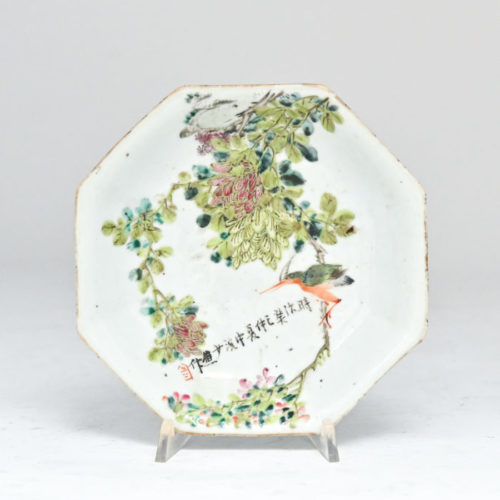 One of six antique ceramic saucers / backsplashes, China, from the early 1900s. Period: Early 1900s Measurements: H 16 x W 16 x D 4.5 cm
One of six antique ceramic saucers / backsplashes, China, from the early 1900s. Period: Early 1900s Measurements: H 16 x W 16 x D 4.5 cm -
Out of stock
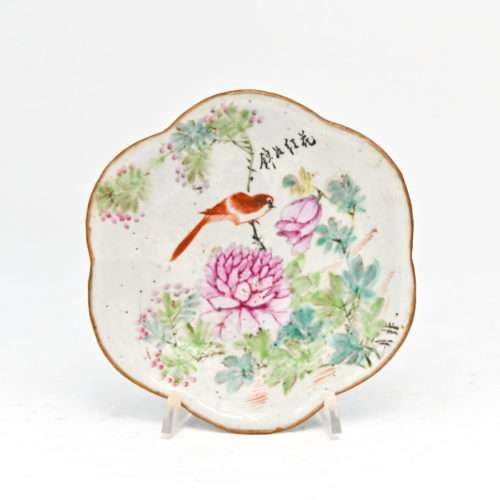 One of six antique ceramic saucers / backsplashes, China, from the early 1900s. Period: Early 1900s Measurements: H 15 x W 16.5 x D 4 cm
One of six antique ceramic saucers / backsplashes, China, from the early 1900s. Period: Early 1900s Measurements: H 15 x W 16.5 x D 4 cm -
Out of stock
 One of six antique ceramic saucers / backsplashes, China, from the early 1900s. Period: Early 1900s Measurements: H 15.5 x W 16.5 x D 4 cm
One of six antique ceramic saucers / backsplashes, China, from the early 1900s. Period: Early 1900s Measurements: H 15.5 x W 16.5 x D 4 cm -
 Italo Gasparucci table with pair of chairs, 1970s. In ashwood and lacquered bamboo. They are in excellent condition with slight signs of wear. Period: 1970s Measurements: Table H 75 x L 142 x P46.5 cm; Chairs H 79 x W 48 x D 45 / H seat 42 cm ts: Flat net L 209 x H 81 x P 70 / With clamps L 217 x H 81 x P 83 cm
Italo Gasparucci table with pair of chairs, 1970s. In ashwood and lacquered bamboo. They are in excellent condition with slight signs of wear. Period: 1970s Measurements: Table H 75 x L 142 x P46.5 cm; Chairs H 79 x W 48 x D 45 / H seat 42 cm ts: Flat net L 209 x H 81 x P 70 / With clamps L 217 x H 81 x P 83 cm -
Out of stock
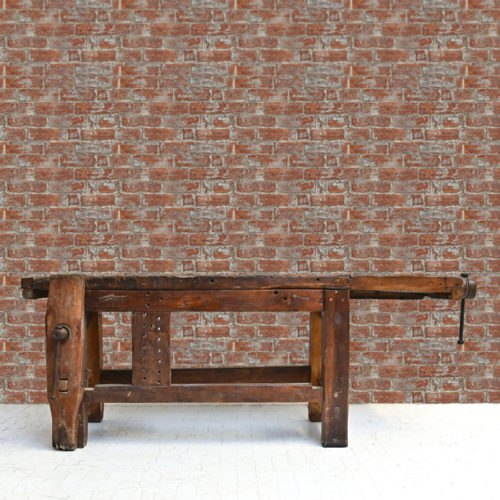 Carpenter's bench from the end of the 19th century, in larch, with double vice. Period: End of the 19th century Measurements: Flat net L 209 x H 81 x P 70 / With clamps L 217 x H 81 x P 83 cm
Carpenter's bench from the end of the 19th century, in larch, with double vice. Period: End of the 19th century Measurements: Flat net L 209 x H 81 x P 70 / With clamps L 217 x H 81 x P 83 cm -
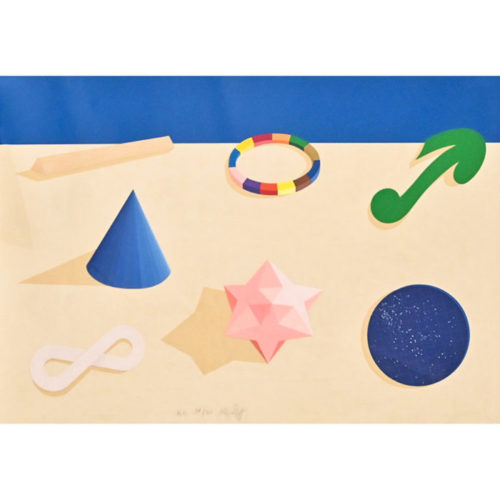 Screen printing and collage on paper by Lucio Del Pezzo, limited edition of only 20 copies. In excellent condition. Lucio Del Pezzo (Naples 1933 - Milan 2020) was an Italian artist, painter and sculptor. He is one of the founders of “Gruppo 58”, which has always been very close to other avant-gardes, such as Enrico Baj's Nuclear Movement, the Spoor Movement of Monaco, Phases of Paris and Boa of Buenos Aires. His works from the period 1958-1960 featured assemblages of various objects, including fragments of popular prints and images. In 1960 he moved to Paris, then to Milan, where several monographic exhibitions have been dedicated to him. The first one dates back to 1974. Starting from 1962 Del Pezzo has created his typical repertoire of "paintings" or "sculptures", made of monochrome geometric panels, on which shelves or hollowed out concavities are inserted, which support regular geometric objects, sometimes very colorful. Lucio del Pezzo's production focuses on the use of common objects that, enriched with different materials, cross the boundary between painting and sculpture. His style is also characterized by a rapprochement with metaphysical atmospheres, while the playful sense and irony behind each work is inspired by the Dadaist movement. Period: 1970s Measurements: In frame H 73 x W 103 x D 3.5 / Serigraphy H 70 x W 100 cm
Screen printing and collage on paper by Lucio Del Pezzo, limited edition of only 20 copies. In excellent condition. Lucio Del Pezzo (Naples 1933 - Milan 2020) was an Italian artist, painter and sculptor. He is one of the founders of “Gruppo 58”, which has always been very close to other avant-gardes, such as Enrico Baj's Nuclear Movement, the Spoor Movement of Monaco, Phases of Paris and Boa of Buenos Aires. His works from the period 1958-1960 featured assemblages of various objects, including fragments of popular prints and images. In 1960 he moved to Paris, then to Milan, where several monographic exhibitions have been dedicated to him. The first one dates back to 1974. Starting from 1962 Del Pezzo has created his typical repertoire of "paintings" or "sculptures", made of monochrome geometric panels, on which shelves or hollowed out concavities are inserted, which support regular geometric objects, sometimes very colorful. Lucio del Pezzo's production focuses on the use of common objects that, enriched with different materials, cross the boundary between painting and sculpture. His style is also characterized by a rapprochement with metaphysical atmospheres, while the playful sense and irony behind each work is inspired by the Dadaist movement. Period: 1970s Measurements: In frame H 73 x W 103 x D 3.5 / Serigraphy H 70 x W 100 cm -
Out of stock
 Pier Luigi Colli (1895-1968), table from the 1950s. The table has elegant cylindrical carved legs, it was built in elm, briar and brass; the top is in green formica. The cabinet is in excellent condition. Period: 1950s Measurements: H 77 x W 180 x D 86.5 cm
Pier Luigi Colli (1895-1968), table from the 1950s. The table has elegant cylindrical carved legs, it was built in elm, briar and brass; the top is in green formica. The cabinet is in excellent condition. Period: 1950s Measurements: H 77 x W 180 x D 86.5 cm
